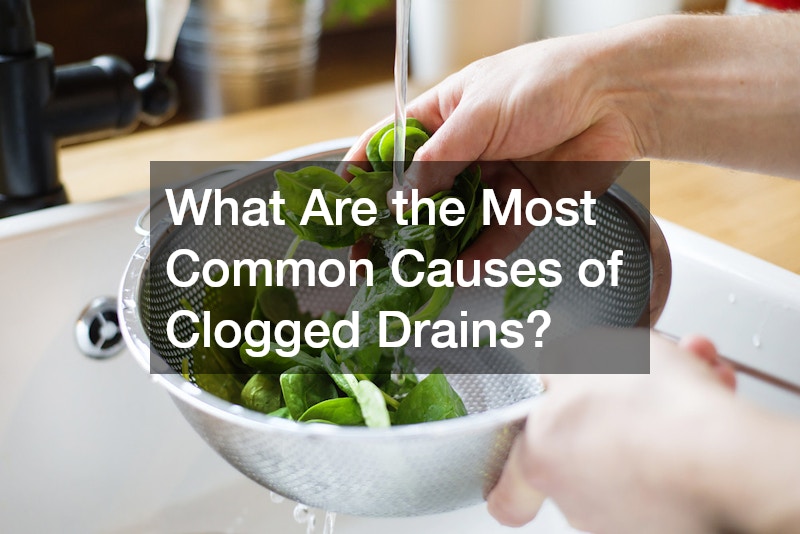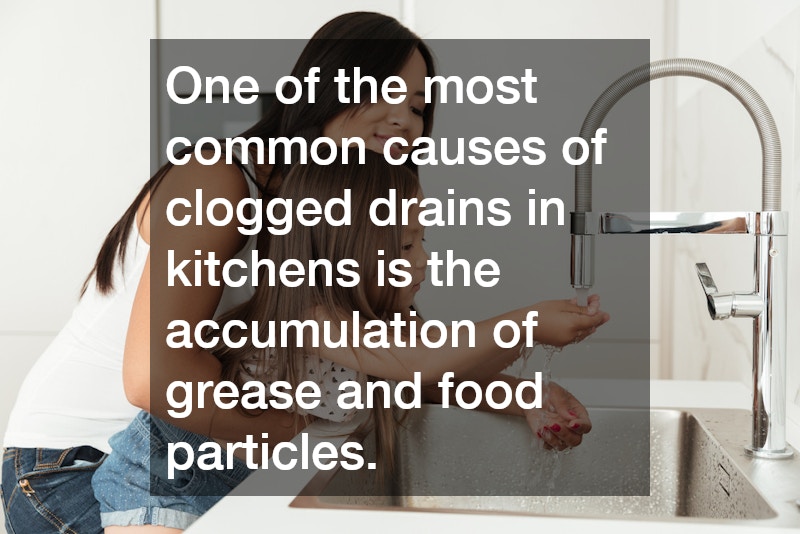

Clogged drains are a frequent household plumbing issue that can cause significant inconvenience and sometimes lead to costly repairs. Understanding the common causes is essential for effective prevention and maintenance. By addressing these issues, homeowners can minimize the need for frequent drain cleaning and ensure a smoothly functioning drainage system.
In residential areas, clogged drains can disrupt daily activities such as dishwashing, showering, and general cleaning. This issue is not just limited to the kitchen or bathroom; it can affect any part of your home’s plumbing.
Knowing why drains get clogged can help in employing appropriate measures to prevent them.
Notably, the environmental impact of clogged drains can be severe, resulting in contaminated water pools and subsequent health hazards. Effective drain cleaning techniques can mitigate these risks while maintaining the integrity of your plumbing. Understanding the root causes can transform drain maintenance from a chore into an organized, proactive effort.
Accumulation of Grease and Food Particles
One of the most common causes of clogged drains in kitchens is the accumulation of grease and food particles. Over time, cooking fats, oils, and small food waste can solidify in the pipes, leading to blockages. Routine drain cleaning is crucial to prevent these materials from causing long-term damage to the plumbing infrastructure.
Regular disposal of cooking grease in a separate container rather than down the sink can greatly reduce the risk of clogs. Additionally, scraping food remnants into a trash bin before washing dishes can further prevent unwanted accumulation in the pipes. These simple practices contribute to the overall efficiency of your home’s drainage system.
Moreover, investing in a drain filter or strainer can serve as an immediate line of defense against food particles entering the plumbing system. This inexpensive tool can save homeowners from the hassle of frequent unclogging and expensive repair bills. While drain cleaning might still be needed from time to time, these preventative measures significantly decrease its frequency.
Hair and Soap Scum Buildup
Bathrooms are prime locations for hair and soap scum accumulation, often leading to clogs in sinks, showers, and bathtub drains. Hair easily gets tangled, forming dense clumps that obstruct water flow, while soap scum acts as a binding agent that makes these clogs more stubborn. Routine drain cleaning in these areas is imperative to prevent unpleasant backups and potential water damage.
Using a hair catcher in bathroom drains can prevent the bulk of hair from entering the plumbing system, significantly lowering the risk of blockages. In addition, regular cleaning of hair build-up on the catcher can ensure that it functions efficiently. This small device can be an effective tool for maintaining free-flowing drains.
Furthermore, using less soap or considering soap alternatives that do not leave as much residue can aid in reducing soap scum buildup. Regularly flushing pipes with hot water can also help in dislodging potential blockages within the system. These maintenance strategies align well with the goal of minimizing the need for extensive drain cleaning procedures.
Tree Roots and Outdoor Debris
In some cases, clogged drains result from external factors such as tree roots intruding into the underground plumbing network. Tree roots naturally seek out moisture and can infiltrate small cracks in pipes, leading to significant blockages over time. Combating such issues requires professional drain cleaning services and possibly pipe replacement.
Additionally, outdoor debris including leaves, dirt, and other natural elements can clog outdoor drains and gutters, particularly after storms. Ensuring that outdoor drainage areas are clear of such debris can prevent overflow and subsequent water damage in the home. Regular inspection and maintenance of outdoor drains are thus essential preventive measures.
Using root barriers and trimming tree roots can help mitigate the risk of roots invading the plumbing system. For existing problems, seeking a professional assessment can provide options like hydro jetting or pipe relining. Addressing these issues promptly ensures a more permanent solution to outdoor-induced clogged drains.
Flushing Non-Flushable Items
One major cause of clogged drains, especially in toilets, is the flushing of non-flushable items such as wipes, sanitary products, and paper towels. These items do not break down easily in water and can cause severe blockages in the plumbing. Educating household members on the appropriate disposal of such items can significantly reduce the need for drain cleaning.
Even items labeled as flushable can sometimes contribute to clogs if not disposed of properly or in large amounts. Encouraging the use of readily accessible trash bins in bathrooms can deter improper flushing habits. Proper disposal practices are an important step in maintaining efficient plumbing systems.
Eventually, recurrent issues with flushing could point to underlying plumbing problems such as deteriorating pipes or insufficient water pressure. Professional assessment and intervention might be necessary to ensure that deeper system problems are addressed. Regularly reevaluating flushing habits and plumbing conditions can lead to more sustainable drain maintenance.
Conclusion and Preventive Measures
Understanding and addressing the most common causes of clogged drains is crucial in maintaining a healthy and efficient plumbing system. Proactive measures such as using drain catchers, proper disposal practices, and regular maintenance can make a significant difference. Homeowners who invest time in these preventive measures can reduce the frequency and costs associated with professional drain cleaning services.
Preventive measures also extend the lifespan of the plumbing system, ultimately leading to a more sustainable home environment. In cases where clogs occur despite these efforts, early identification and professional assistance can prevent escalation and damage. Regular evaluations and adjustments in household habits can ensure long-term improvements.
In conclusion, a combination of household awareness and consistent preventive actions forms the cornerstone of effective drain maintenance. Such diligence proves beneficial not only for individual homes but also contributes to broader environmental sustainability efforts. The quest for a clog-free plumbing system begins with understanding its commonplace causes and implementing the necessary solutions.
.








